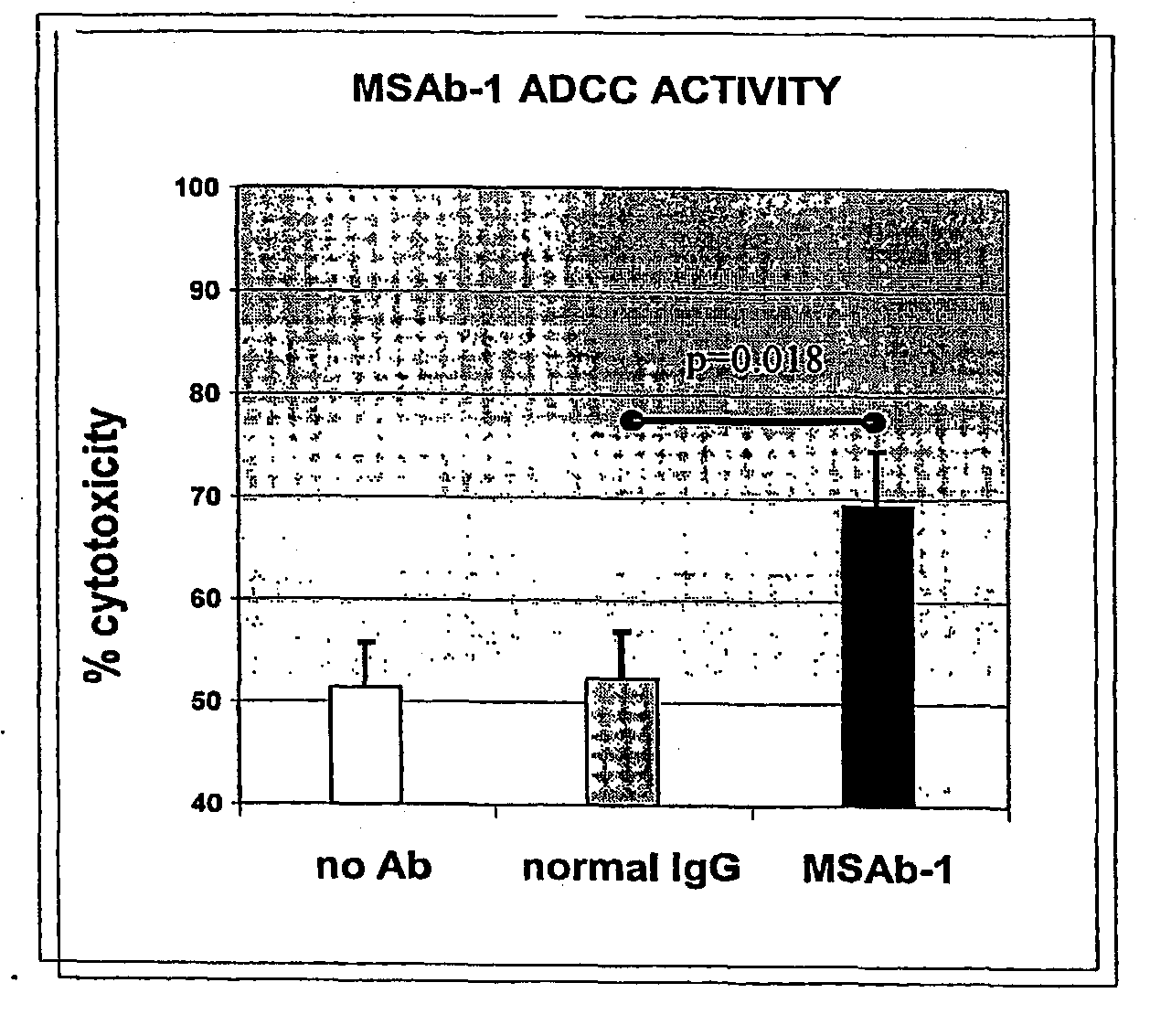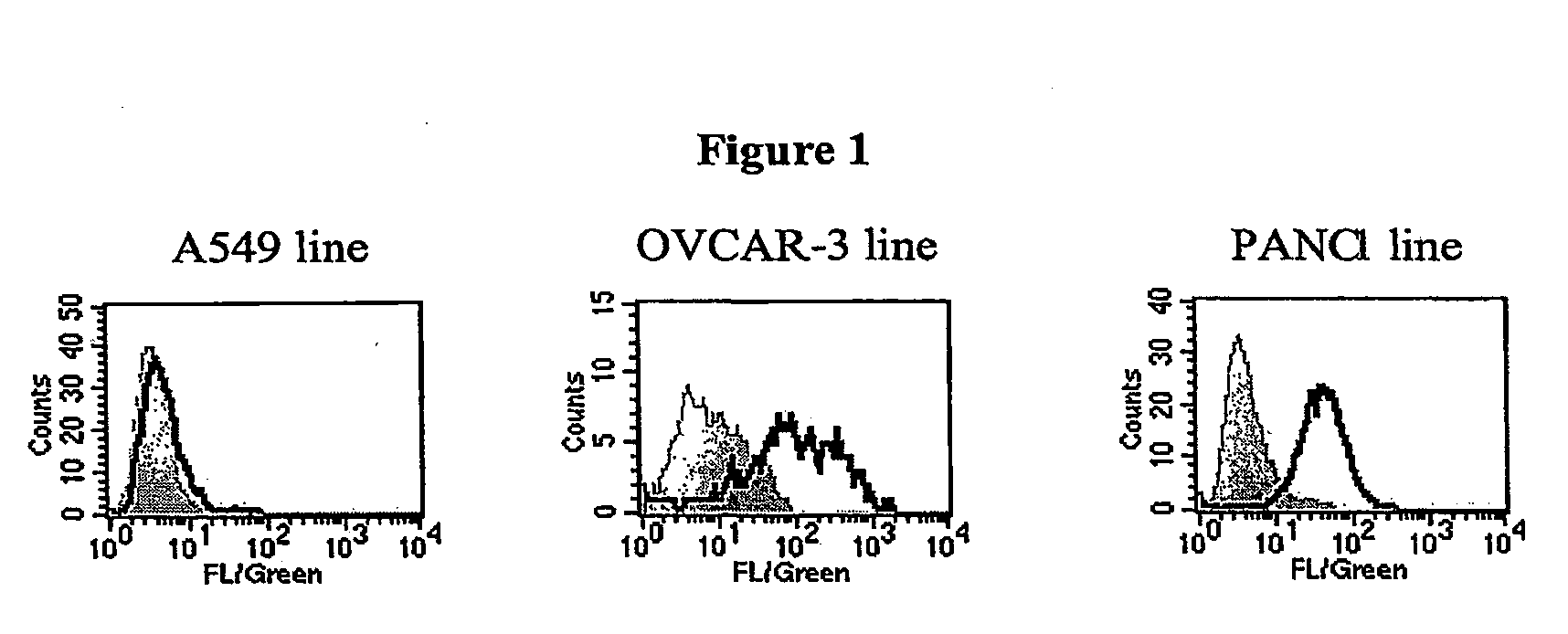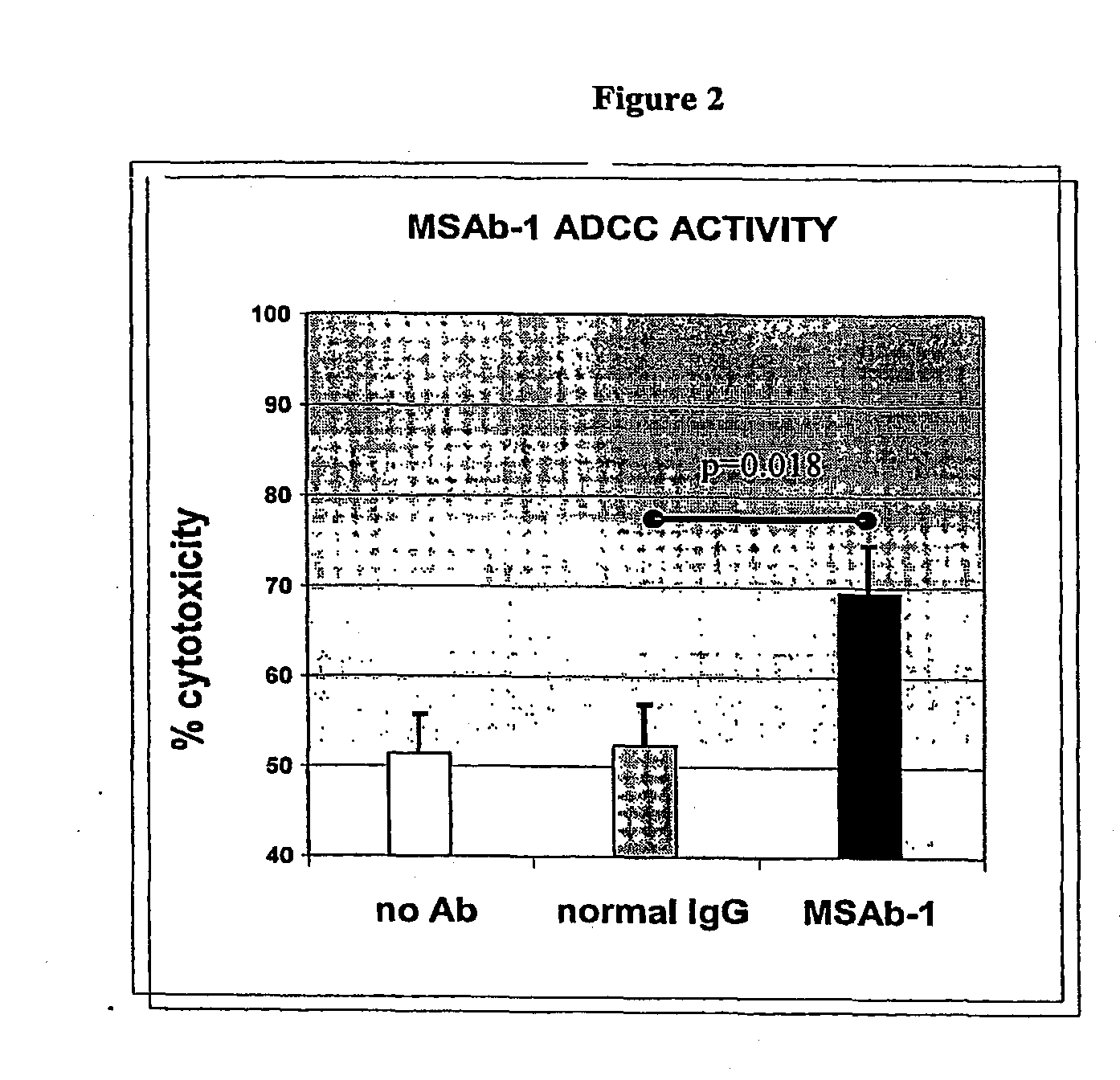Anti-Mesothelin Antibodies
an anti-mesothelin and antibody technology, applied in the field of antibodies, can solve the problem that antibodies that can target cell surface antigens do not always elicit an immune effector function
- Summary
- Abstract
- Description
- Claims
- Application Information
AI Technical Summary
Problems solved by technology
Method used
Image
Examples
example 1
In-Out Antibodies that can Bind to Mesothelin
[0132] The monoclonal antibody MSAb-1 was developed by cloning the variable domain of a mesothelin FAb fragment to the human IgG1 constant region. The antibody was shown to bind specifically to mesothelin protein and cancer cells expressing mesothelin and was found to have a binding constant of 2 nM using BIACORE. MSAb-2 and MSAb-3 are variants of MSAb-1 that have different nucleotide and amino acid sequences within their respective variable regions. To demonstrate mesothelin-specific binding, ELISA assays were performed using recombinant mesothelin in a 96-well format following methods used by those skilled in the art. Antibodies found to react by ELISA were further analyzed for mesothelin binding using FACS analysis following the manufacturer's protocol. Shown in FIG. 1 are representative data of the FACS analysis whereby mesothelin-expressing ovarian and pancreatic tumor cells were positive for MSAb-1 binding in contrast to null cells...
example 2
Immune Effector Activity of MSAb-1
[0133] Activity of MSAb-1 in-out antibody for immune effector activity was assessed by standard antibody dependent cellular cytotoxicity (ADCC) assays on the mesothelin expressing OVCAR-3 cell line. Briefly, OVCAR-3 target cells were seeded in flat-bottom 96-well microplates in complete growth medium (RPMI-1640 containing 10% FBS, 2 mM L-glutamine). The following day, the complete medium was replaced with 100 μl of CHO-CD serum-free medium (Sigma) and 50 μl of antibody-containing conditioned medium was added to target cells and incubated for 20 minutes at 37° C. Subsequently, 100 μl of serum-free medium containing 2×105 of effector cells were added to each well and cells were incubated for 5-6 hours at 37° C., 5% CO2. Effector cells were derived from human peripheral blood mononuclear cells (PBMCs) isolated from healthy donors (purchased from Interstate Blood Bank). Prior to use in ADCC assays, PBMCs were activated by seeding PBMCs at 2.5×106 / ml in...
example 3
Internalization of MSAb-1
[0135] MSAb-1 internalizes when bound to mesothelin-expressing cells. This finding is shown in FIG. 3 using the Hum-ZAP assay. Second immunotoxins are conjugations of a secondary antibody to the ribosome inactivating protein saporin. If the primary antibody being tested is internalized, the saporin is transported into the cell via its binding to the secondary antibody. Once internalized, saporin separates from its IgG conjugate, inhibits protein synthesis, and ultimately causes cell death. Hum-ZAP (Advanced Targeting Systems, cat# IT-22) is a secondary chemical conjugate of affinity purified goat anti-human IgG, (mw 210 kDa) that recognizes human monoclonal antibodies. The control molecule, Goat IgG-SAP (Advanced Targeting Systems cat#IT-19) is a conjugate of normal goat IgG and saporin. Briefly, cells were plated into flat-bottom 96-well tissue culture plates at 2500 / well in 80 μl of RPMI 1640 with 10% FCS, 2.0 mM glutamine, 1.0 mM sodium pyruvate, and 0.1...
PUM
| Property | Measurement | Unit |
|---|---|---|
| mw | aaaaa | aaaaa |
| total volume | aaaaa | aaaaa |
| total volume | aaaaa | aaaaa |
Abstract
Description
Claims
Application Information
 Login to View More
Login to View More - R&D
- Intellectual Property
- Life Sciences
- Materials
- Tech Scout
- Unparalleled Data Quality
- Higher Quality Content
- 60% Fewer Hallucinations
Browse by: Latest US Patents, China's latest patents, Technical Efficacy Thesaurus, Application Domain, Technology Topic, Popular Technical Reports.
© 2025 PatSnap. All rights reserved.Legal|Privacy policy|Modern Slavery Act Transparency Statement|Sitemap|About US| Contact US: help@patsnap.com



